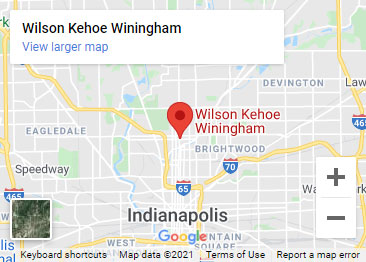Updated April 24, 2025
Can Your Case Benefit From Summary Judgment?
Have you been told your case may result in a summary judgment ruling? If so, you may wonder what that is and what it means for your case. Read on to learn what summary judgment requires and why it may be right for your circumstance.
Understanding Summary Judgment
There is a difference between a verdict and a summary judgment. A summary judgment is a decision made based on statements and evidence without going to trial. It’s a final decision by a judge designed to resolve a lawsuit before trial. Summary judgment entitles one party to judgment when the Court believes no “material issue of fact” exists on the issue raised before the Court, and the Court must enter judgment as a matter of law.
How Is Summary Judgment Granted?
The Court grants summary judgment when there is no material issue of fact and it is required to enter judgment as a matter of law.
A genuine issue of material fact exists when facts related to the specific legal claim are in dispute or when undisputed facts support different outcomes on an issue.
Who Can Move to Summary Judgment?
Whether they’re the defendant or the plaintiff, any party in a case can move toward summary judgment; however, in personal injury cases, it is more likely for the defendant to make the move.
The party who files the summary judgment bears the burden of proving no material facts are at issue. The facts, however, are construed in the light most favorable to the party who did not file the summary judgment. The Courts disfavor summary judgment in negligence cases.
What Evidence Can Be Used?
The evidence used to support a motion for summary judgment must be verified and authenticated. Examples of this type of evidence include:
- Deposition transcripts
- Signed affidavits
- Pleadings in the case, such as the complaint or answers to interrogatories
An Indiana personal injury attorney can help you determine the needs of your case.
What Are the Pros and Cons of Summary Judgment?
If an attorney tells you your case may receive a summary judgment, you may wonder whether that’s good or bad.
One of the main reasons to file a motion for summary judgment is that it’s usually quicker and less expensive than going to trial. A summary judgment may be appropriate if your case is relatively straightforward and the facts are undisputed. This can save you from the inconvenience and stress of enduring a courtroom battle.
Additionally, when one party asks a judge to grant summary judgment, it’s often because they’re confident their argument is indisputable.
For example, suppose you are suing a doctor for medical malpractice. If the medical review panel determines there was a breach in the standard of care and it caused your outcome, then the defendant must come forward with an opinion from another doctor to contradict the panel. If not, a motion for summary judgment is appropriate as there are no facts to support that the doctor did not commit malpractice. If the judge agrees, the ruling will favor the plaintiff.
If, on the other hand, the doctor accused of malpractice moves for summary judgment, they believe that the facts of the case will favor them. This belief might happen if the medical review panel found in favor of the doctors and against the patient. To survive summary judgment, the plaintiff must present an affidavit or testimony of a supportive doctor. If the plaintiff does not, the judge will grant summary judgment, and the plaintiff will not be able to present their case in court.
What Does the Summary Judgment Process Look Like?

The summary judgment process has, in general, five steps:
1 – Motion for Summary Judgment
The moving party has to file a motion for summary judgment. The motion for summary judgment will likely be given a hearing date—although not always—and the parties will be notified. The motion for summary judgment will include evidence that the moving party feels supports their argument that the Court should enter judgment in their favor.
2 – Response to Summary Judgment
After filing a summary judgment, the non-moving party usually has 30 days to file a response motion. In the response, the non-moving party will designate evidence and argue that material facts in dispute preclude summary judgment.
3 – The Hearing Date
If a hearing is held, the Plaintiff and Defendants will argue their case before the judge, highlighting each of their sides and arguing that the Court either should or should not enter summary judgment. In most cases, the judge will take the arguments under advisement, meaning an answer will not be given that same day.
4 – The Judge Reviews the Case
The judge will decide after the Court considers the evidence from the motion and hearing. It can take several months for a judge to issue an order. In federal court, the judge’s ruling often takes much longer, and it is not uncommon for judges to wait six or more months for their decision.
5 – The Judge Makes a Final Decision
If the Court issues a ruling in favor of the moving party, then the Court has decided either part or all of the case. If the Court denies the summary judgment, the parties will proceed with their litigation as before. Upon denying summary judgment, the Court often orders the parties to attempt mediation to seek a resolution. If it cannot, the case will proceed forward to trial.
Contact a Personal Injury Attorney Today
If you or a loved one have been injured due to someone else’s negligence, contact an Indiana personal injury lawyer from Wilson Kehoe Winingham. The lawyers at WKW can help you get the compensation you deserve. Call 317-920-6400 or fill out an online contact form for a free, no-obligation case evaluation.
Practice Areas WKW can Represent You:
Top Cities Where We Offer Medical Malpractice Representation:
Contact Us
Let WKW put our experience to work for you. Contact us for your free case evaluation.
Or, call us today at (317) 920-6400



